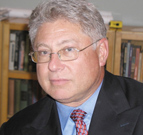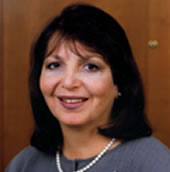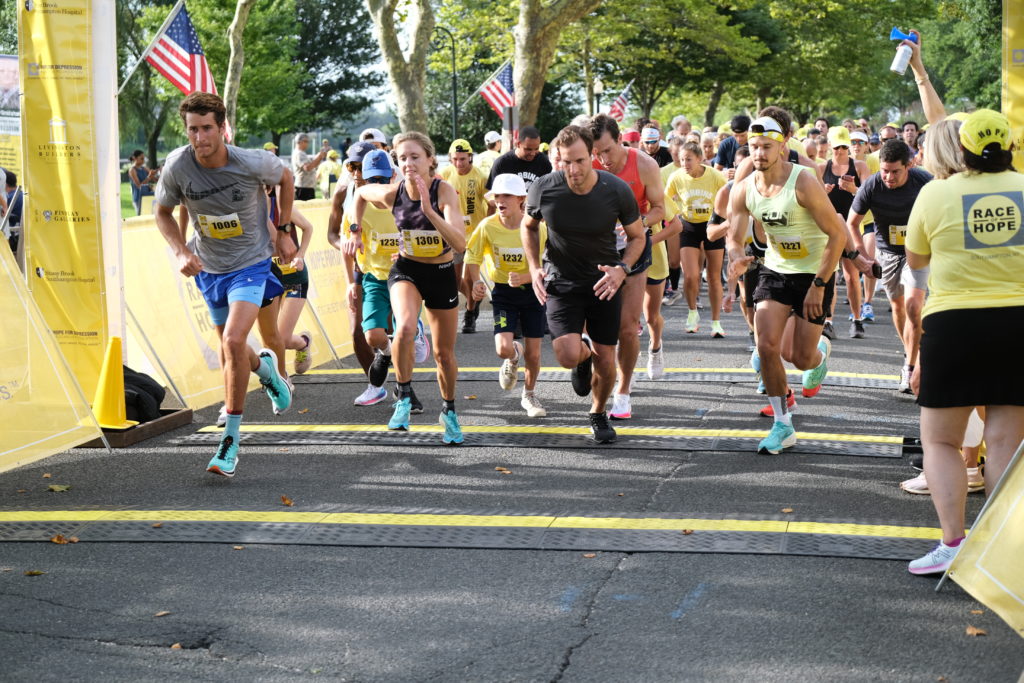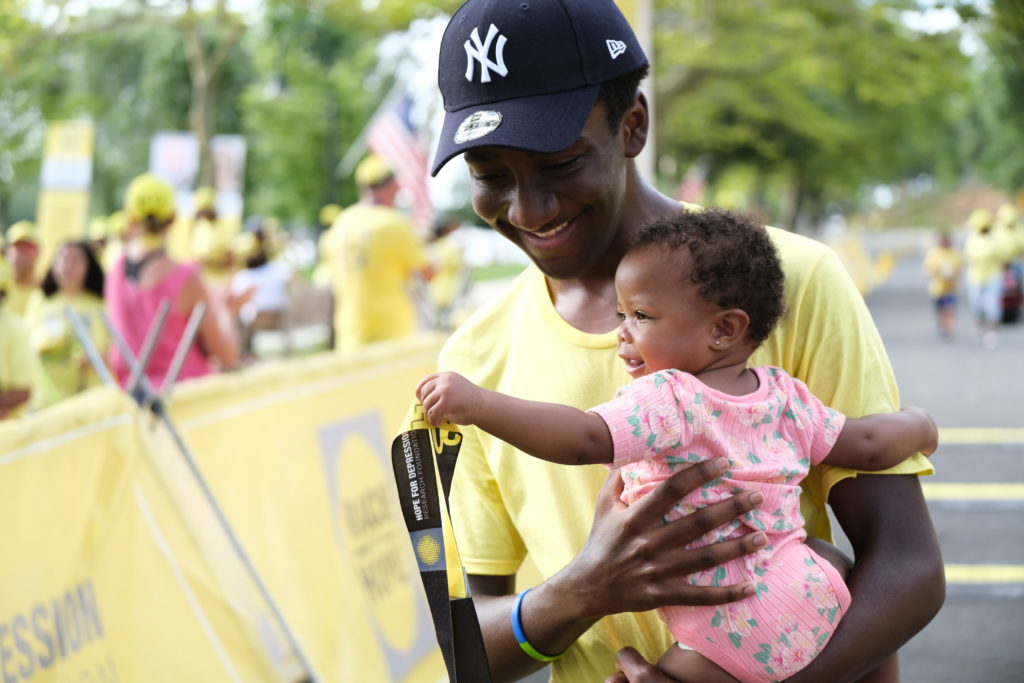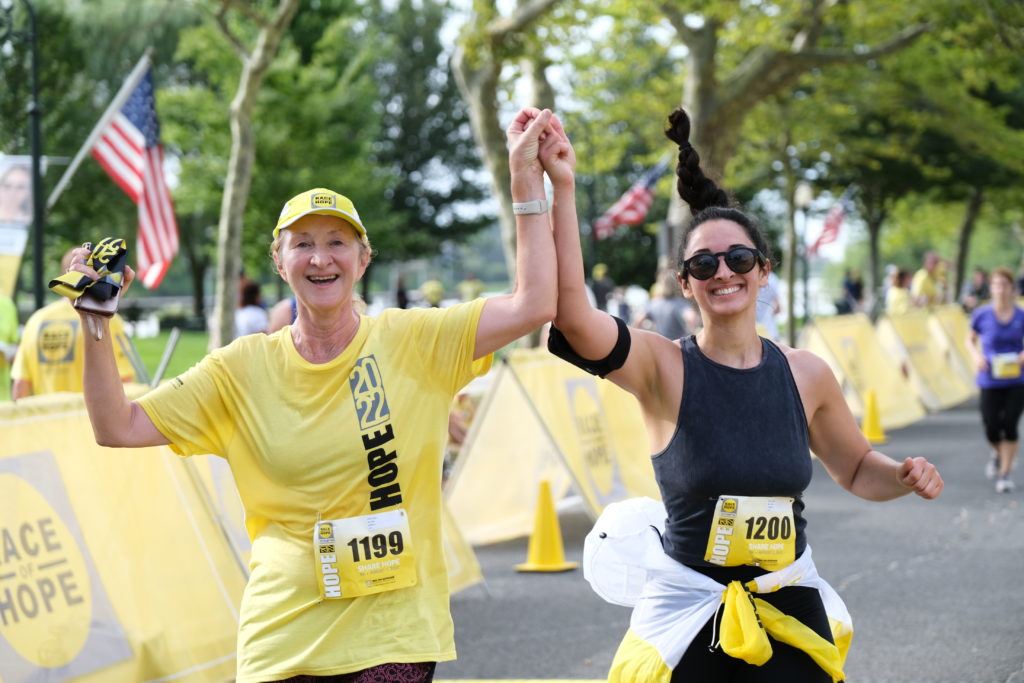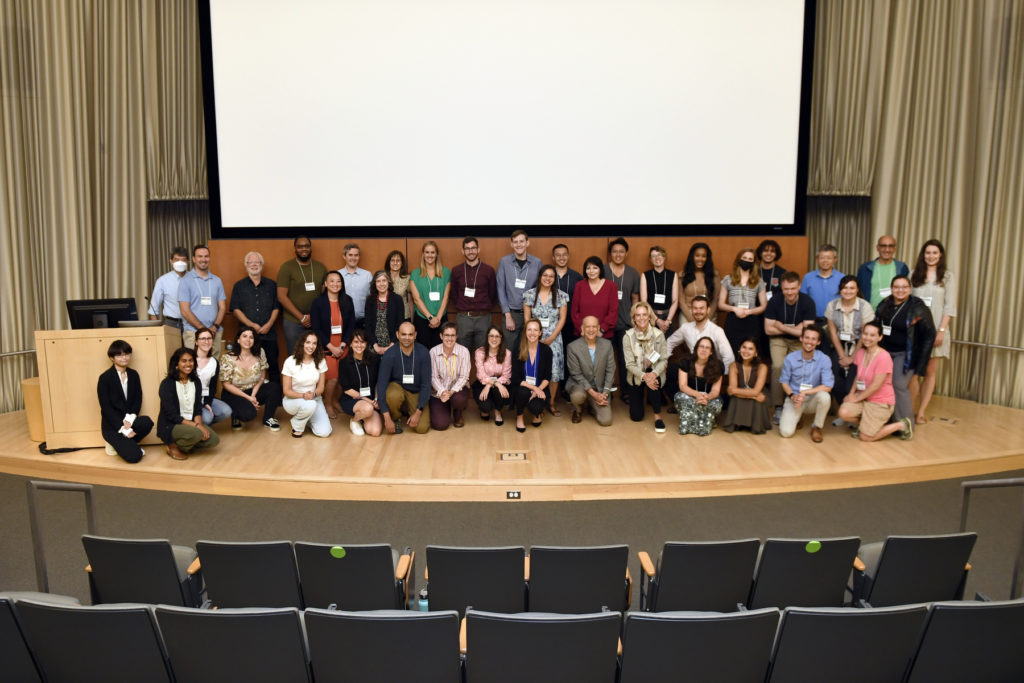Guest Bloggers
For the First Time, There’s a Pill for Postpartum Depression,
August 22, 2023
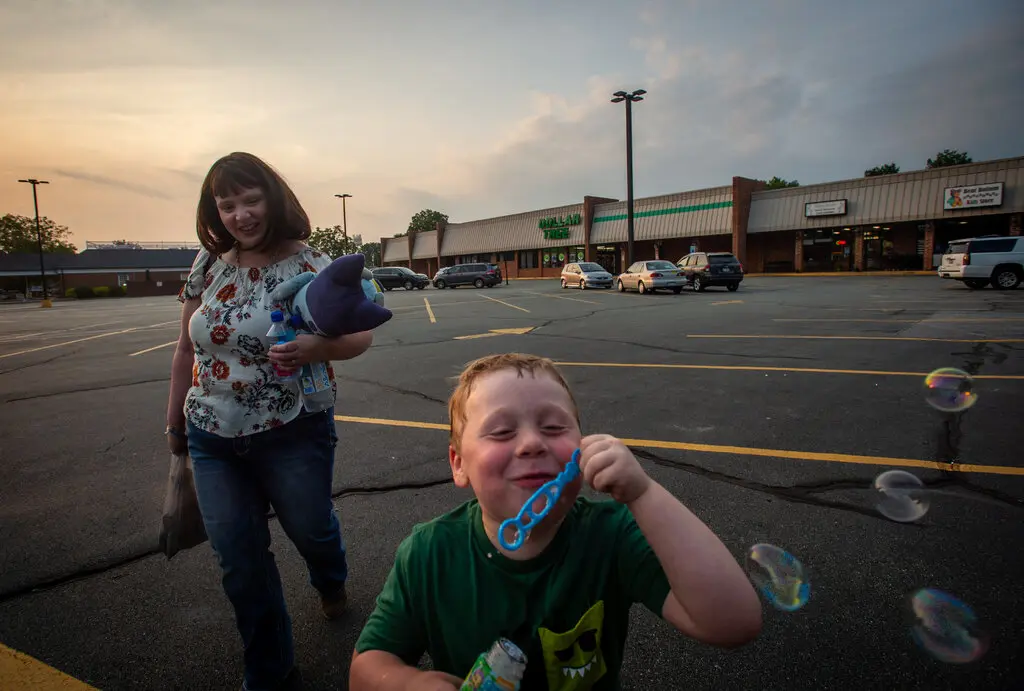
Amy Bingham suffered from postpartum depression in 2018 after giving birth to her son, Benjamin. She received the new drug, zuranolone, in a clinical trial and said her symptoms gradually improved.

Dear Friend,
We always like to keep you abreast of the latest news in depression research.
Earlier this month, the Food and Drug Administration approved zuranalone, the first pill for the treatment of post-partum depression (PPD). A similar treatment had previously only been available intravenously over a five-day inpatient hospital stay. Having this relief in a lower-cost pill form makes the treatment accessible to more people. The drug was developed by Sage Therapeutics and Biogen. Click here to read the recent news coverage.
Zuranalone is not an SSRI-type drug, rather it contains a brain hormone produced by progesterone. Thus, it can help women who develop PPD as a consequence of the major drop in progesterone that happens after childbirth.
Dr. Eric Nestler, Chair of HDRF’s Depression Task Force, explains how the pill is a welcome development: “Standard antidepressants like SSRIs are very effective in treating postpartum depression. There are two advantages to zuranolone: (1) it seems to act faster – within a few days as opposed to the weeks it can take the standard drugs; and (2) it is approved specifically for postpartum depression, which might help promote its use.”
The groundwork for this new drug was laid over many years and underscores one of the central tenets of our mission – that more basic neuroscience research into depression is needed to find new and better treatments. We celebrate this progress within the depression research community, as every milestone is an important step forward.
Thank you for your great support of our research mission.
Spring 2023 Newsletter,
July 12, 2023
 Loading...
Loading...
Seventh Annual Southampton Race of Hope Raises $325,000 for Depression Research,
August 22, 2022
Candace Bushnell Leads More than 400 Runners at Seventh Annual 5K Race of Hope to Defeat Depression in Southampton, NY
Event Raises Over $325,000 for Depression Research
(August 8, 2022 – Southampton, NY) – The Hope for Depression Research Foundation’s (HDRF) Seventh Annual 5K Race of Hope brought together more than 400 men, women, and children on Sunday, August 7th in Southampton Village in support of mental health awareness and research. Iconic author and creator of the Sex and the City series, Candace Bushnell, cheered the crowd on as Celebrity Grand Marshal during the festive event, which raised over $325,000 for research into new and improved treatments for depression and anxiety.
HDRF founder Audrey Gruss and Board member Arthur Dunnam, both Hamptons residents, served with Bushnell as Co-Grand Marshals of the 5K walk/run, which is a USA Track and Field-sanctioned event.
“This organization is so important to me because I too, have suffered from depression and I can tell you that it robs people of a portion of their lives,” said Bushnell. “I’ve also had friends who have had mental illnesses and the outcome hasn’t always been good for them. This is a very personal cause for me and I’m so excited about the work that Audrey Gruss is doing to find new treatments.”
Audrey Gruss said, “Over 100 million people struggle with depression and anxiety since the pandemic. That’s a third of Americans including men, women and children. You are out here today to help raise awareness and help support one of the most prevalent health issues of our time.”
“For sixteen years we’ve raised awareness and done the research, and we’re on the way to finding a new antidepressant,” added Gruss. “Did you know that 50% of the people who need medication, don’t respond to what’s out there? Most of the available medications are over 35 years old, with Prozac being introduced in 1985. Now we’re working on a major new category of medication with clinical trials at Mount Sinai and Columbia, and your support today will help fund this critical research.”
At the starting gun, participants set off to complete the 3.1-mile course around Lake Agawam and the tree-lined streets of Southampton, NY. Hope was in abundant supply as everybody sported t-shirts and caps in HDRF’s signature sunshine yellow.
At the close of the race, Audrey Gruss handed out awards in several categories including First Prize for best male time went to William Hague, and First Prize for the best female time went to Kira Garry. The award for Top Fundraising Team went to Kim Heirston, which raised over $21,000. The award for Top Individual Fundraiser went to Arthur Dunnam, who raised $45,400 from friends and family for his race. The award for the largest team went to Natasha Jefferies and her team, Dakari’s Heartbeat, with 14 members.
All race participants received an HDRF branded ultra-lightweight jacket, hat, race shirt, and finisher medal. The first, second, and third place winners received cash prizes of up to $500. Successful fundraisers also received special prizes for raising upwards of $250 and $1,000.
Race participants included: Janna Bullock, Sharon Bush and Bob Murray, Jamee and Peter Gregory, Kim Heirston, Tania Higgins, Richard LeFrak, Anne Nordeman, John Paulson, James and Teresa Remez and their daughters Sofia and Lila, Mirella Cameran-Reilly, Southampton Village Mayor Jesse Warren and Lis Waterman.
5K Race of Hope Committee
Diamond Level: Tom Quick and Michael Donnell
Platinum Level: Dominique Buaron, Jamee & Peter Gregory, Judy & Leonard Lauder, Nicola & Jeffrey Marcus, Paulson Family Foundation and Nancy Silverman.
Gold Level: Felice & Shelley Bergman, David C. Bohnett, James R. Borynack & Adolfo Zaralegui/Findlay Galleries, Geoffrey Bradfield, Ide & David Dangoor, Arthur Dunnam & Roy Cohen, Annie & Michael Falk, Bambi & Roger, Felberbaum, The Honorable David Fischer & Jennifer Fischer, Frances & Jeff Fisher, Mary Ann Fribourg, Kim Heirston, Tania Higgins, Kontes Family, Susan Lloyd, Sharon & John Loeb, Jr., Robert F. Mancuso, Mary P. Moran, Laura Nicklas, Anne & Jacques Nordeman, Jane & Richard Novick, Kathy Prounis, Barbara & Randall Smith, Scott Snyder, Mary Ann Tighe & David Hidalgo and Lynne Wheat.
Silver Level: Bruce Bierman & William Secord, Serena & Brad Bowman, Jill Blanchard, Rita & Charles Bronfman, Bulgin & Associates, Janna Bullock, Sharon Bush & Bob Murray, Pilar &, Stephen Robert, Lisa & Sanford Ehrenkranz, Marjorie & Alexander Federbush, Kelli & Jerry Ford, Barbara & Alan Glatt, Mrs. Darcy Gould, Susan Gutfreund, Candy Hamm, Mai Hallingby Harrison, Yaz & Valentin Hernández, Gail Hilson, Ashley & Harriet Hoffman, Elizabeth & Edgar Howard, Natasha Jeffries, Carol Mack, Muffy & Donald Miller, Lucia N. Musso, Pamela Pantzer, Bonnie Pfeiffer Evans, Robin Pickett, Hilary Geary Ross, Nancy Schaffel, Carolyn & Curtis Schenker, Frances G. Scaife, Ginny & David Sydorick, Lydia Touzet, Nicholas Varney, Susan H. Warner, Lis Waterman, Clelia & Tom Zacharias and Silvia Zoullas.
5K Race of Hope Sponsors
Akris, Findlay Galleries, Gubbins Running, Jacob Antilety Landscaping, Juice Press, Livingston Builders, Scott’s Protein Balls, Southampton Arts Center, Stony Brook Southampton Hospital, Tammy Fender skincare.
About Hope for Depression Research Foundation:
Audrey Gruss founded HDRF in 2006 in memory of her mother Hope, who struggled with clinical depression. Today, HDRF is the leading nonprofit organization focused solely on advanced depression research into new and better treatments for the illness. The World Health Organization has declared depression as the leading cause of disability worldwide, and yet conventional medications today are outdated and do not fully work for 50% of patients. The mission of the HDRF is to spur innovative neuroscience research into the origins, medical diagnosis, new treatments, and prevention of depression and its related mood disorders – bipolar disorder, postpartum depression, post-traumatic stress disorder, anxiety disorder, and suicide. To date, HDRF has provided more than $45 million through over 200 grants for breakthrough depression research that promises to transform the way depression is viewed, diagnosed, treated and prevented. Currently, HDRF has a potential new class of medication in pilot clinical trials at Mount Sinai Medical Center and Columbia University.
HDRF Hosts Panel Discussion on Mental Health to Kick-Off the Seventh Annual 5K Race of Hope,
July 21, 2022
On Friday, July 15th, Hope for Depression Research Foundation (HDRF) hosted a panel discussion on mental health at the Southampton Arts Center in Southampton Village, New York.
The hour-long discussion focused on The Four Pillars of Mental Health: Sleep, Diet, Exercise and Meditation. Over 80 people attended the event, which HDRF conceived in partnership with Southampton Arts Center (SAC) Board member Simone Levinson.
Panelists were Bob Roth, CEO of the David Lynch Foundation, Eddie Stern, yoga instructor and author, Jamie Pabst, founder and CEO of Spiritune and Ivey Leidy, nutrition expert and coach. The moderator was HDRF Executive Director Louisa Benton.
The event was a kick-off for the seventh annual Race of Hope to Defeat Depression, a 5K run/walk in August that raises funds for depression research. In her welcome remarks, HDRF Founding Chair Audrey Gruss said: “This discussion on evidence-based methods to reduce stress and increase resilience to anxiety is more important than ever. Mental illness and mental wellness are the reverse side of the same coin.”
A luncheon followed the panel discussion, and was exclusively for the committee members of the Race of Hope. Over 60 committee members attended including James R. Borynack and Adolfo Zaralegui, Janna Bullock, Arthur Dunnam and Roy Cohen, Mark Gilbertson, Alan Glatt, Jamee and Peter Gregory, Martin Gruss, Mai Hallingby Harrison, Kim Heirston, Natasha Jeffries, Sharon Loeb, Anne Nordeman, Kathy Prounis, Nancy Silverman, and Lis Waterman.
Luncheon Guests were seated at tables adorned with bright yellow sunflowers in the SAC Sculpture Garden, where they enjoyed a delicious buffet of grilled chicken kebabs, poached salmon, grilled vegetables, gourmet cheeses, farro salad, garden salad, red potato and string beans and fresh fruit kebabs. Juice Press donated fresh, healthy beverages.
Throughout the luncheon, models strolled among the tables wearing items from the Fall 2022 collection from Akris, a sponsor of the Race of Hope. After the luncheon, guest walked to the Akris boutique nearby on Jobs Lane for champagne, dessert bites, and gift bags.
June 2022 Depression Task Force Scientific Summit,
June 30, 2022
In June more than 40 neuroscientists from the Hope for Depression Research Foundation (HDRF) Depression Task Force met in person at the University of Michigan, Ann Arbor for a three day annual retreat and summit. They shared exciting research updates and bonded as colleagues.
This was the seventh annual retreat for the Depression Task Force consortium, a major, multi-university effort to advance the understanding and treatment of depression. The scientists were grateful to be together after covid restrictions forced the meeting to be on zoom for the past two years.
“We need this community to tackle a complex problem like depression,” said Dr. Huda Akil, Professor of Neuroscience at the University of Michigan, who is a founding member of the Task Force. She pointed out that depression is a shadow pandemic on the heels of COVID.
The Depression Task Force consists of nine principal investigators, each of whom run large labs. The investigators are: Dr. Akil of Michigan, Dr. Eric Nestler of Mount Sinai, Dr. Helen Mayberg of Mount Sinai, Dr. Rene Hen of Columbia, Dr. Jonathan Javitch of Columbia, Dr. Michael Meaney of McGill University and Singapore Institute for Clinical Sciences, Dr. Elisabeth Binder of Germany’s Max Planck Institute, Dr. Conor Liston of Weill Cornell, and Dr. Kafui Dzirasa of Duke.
By extension, all of the junior scientists in these labs are also part of the Task Force consortium and appreciate it as career-defining opportunity. They have learned trust and seamlessly share information and research data even before it is published.
“Young scientists are often told, ‘don’t share your work – it’s a competitive world out there,’ but with the Task Force, it’s okay – you are among family,” said Akil.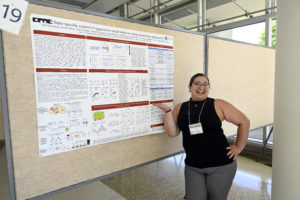
Each year the retreat allows the young scientists to interact, spark ideas, and benefit from being mentored by the principal investigators. The collaborative approach has propelled the science over the past decade, since 2012 when the DTF was formed.
“They’ve really shaped each other’s science in ways that is so rare,” said Dr. Joanna Louise Spencer-Segal, MD, Assistant Professor at the University of Michigan. “It keeps it fast, it keeps it relevant. It keeps people focused on the goal, which is drug discovery.”
While the days were packed with presentations on campus, Tuesday night dinner allowed for an excursion to Cornman Farms’ Red Barn just outside the city. There the scientists enjoyed wine and a gourmet meal served with the sunset pouring in the barn windows.
All the members of the Depression Task Force expressed thanks to Pamela Patterson, PhD, a young scientist in Dr. Akil’s lab, who organized the entire three-day event.



